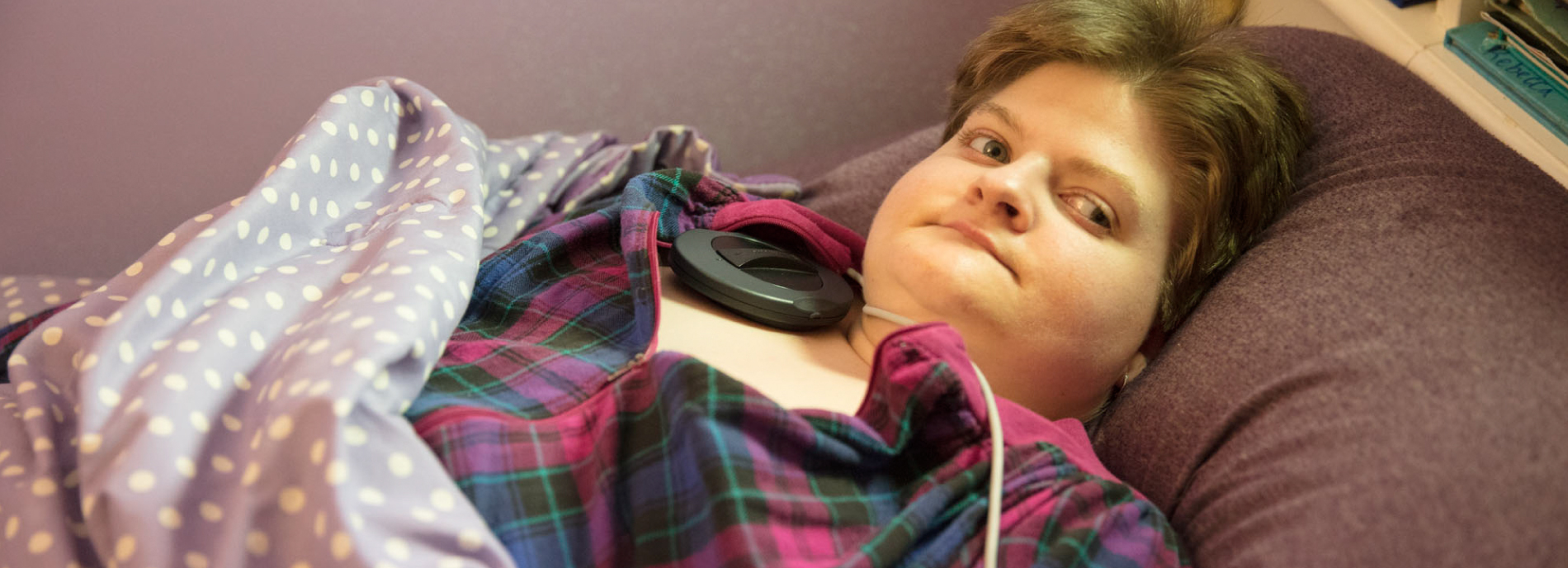
Rebooting Becky’s brain
An electrical brain implant all but erased the obsessions that had consumed Becky Audette, years after her autism diagnosis. Could similar implants help other people with severe autism?
I
t’s 7 p.m. on a Friday and Rebecca ‘Becky’ Audette is already in bed, tucked under a polka-dotted lavender comforter. Dark purple velour curtains with butterfly ties hang over the lavender walls of her bedroom.Purple has been Becky’s favorite color since she was a toddler, before she was diagnosed with autism at age 7. Now the young woman functions at about the level of a 4-year-old.
“Am I going to bed? I want to go to bed,” she insists.
Becky lives with her mother, Pamela Peirce, brother, Jason Audette, and Jason’s wife in a gray-and-white colonial-style house that was Peirce’s childhood home in Rehoboth, Massachusetts. When Peirce was a child, her extended family owned five houses along this quarter-mile stretch of road, dirt back then. Peirce and her grown children are the last of the clan to occupy the street. It’s paved now, but the house still sports features of an earlier time: two-pronged electrical outlets, a VCR, inherited furniture.
It also offers a hopeful vision of the future. Becky bears the markings of an invasive, high-tech treatment under her purple plaid pajamas: two linear scars, each about three inches long, over her clavicle, and two circular bulges protruding ever so slightly from her chest. Beneath these marks lies the power source for an implant that stimulates key parts of her brain.
When Peirce opted for this treatment, called deep brain stimulation (DBS), for her daughter almost a decade ago, it had, to her doctors’ knowledge, never been attempted in a person with autism. But Peirce had run out of options. In her late teens, Becky had become preoccupied with the repetition of certain sights and sounds, to the exclusion of all else. She watched the same video clip over and over until the tape in the VCR next to her bed broke, and said little, other than to bark occasional obscenities.
It was a long shot. DBS was not — and still is not — an approved treatment for autism. The only real science supporting its use for the condition are a few studies showing that it suppresses repetitive, injurious grooming in mice.
Even so, brain surgeons have performed the procedure — in five autistic people to date, by the best estimate — as a last resort to help those in whom all other treatments have failed. In only two cases was a doctor attempting to address core autism features. Even in those instances, the main goal was to tame specific, severe traits that sometimes accompany autism — for example, as a radical solution for children who hurt themselves relentlessly.
In Becky’s case, the gamble paid off. After three major surgeries, a host of minor procedures and countless doctor’s visits, DBS finally took Becky’s finger off rewind so she could move forward with her life — to dance, bowl, sing karaoke, help her mother make pizza and even to tell a stranger, “I love you.”
And Becky, now 31, is not the only one to have benefited. Other individuals on the spectrum have shed severe self-injurious behavior or have spoken for the first time after surgeons threaded electrodes into their brains. Based on these promising results, researchers are beginning to propose experiments that test the treatment specifically for autism. Ultimately, they may use the method to explore the brains of autistic people for clues to what makes them different.
“I think there will continue to be cases where [DBS] is clinically warranted and, from a purely scientific research perspective, in principle, very valuable,” says Ralph Adolphs, professor of psychology and neuroscience at the California Institute of Technology in Pasadena. “But they are going to be case studies and are going to face all the difficulties of case studies — the variability of autism, the lack of precision and control of DBS.”
Emotional rescue:
B
efore bed each night, Becky gets charged like a cell phone.“You’re not going to put my battery on?” she asks her mother on this evening in late April. Becky doesn’t understand that the batteries in her chest calm her tics and tantrums, but she knows the routine.
“I am going to put your battery on,” Peirce reassures her.
The idea behind DBS is to ‘reset’ a malfunctioning brain circuit by jolting it with an electrical current. Peirce places a palm-sized disk on Becky’s chest, one side and then the other, to charge the battery-powered ‘pacemakers’ under her skin. The pacemakers connect to electrodes on either side of her brain via wires in her neck.
Implants like Becky’s are used routinely to ease debilitating tremors, rigidity, slowness or involuntary movements in certain conditions, principally Parkinson’s disease and essential tremor, when standard medications fail. Surgeons often place the electrodes within the basal ganglia, brain structures that govern subconscious movements, among other functions. Clinicians later fine-tune the amount of current, adjusting the voltage, frequency and pulse width of the signal needed for a good response.
It is a delicate process. The region’s switchboard for gait and posture, the subthalamic nucleus, is part of the neural controls for motivation, decision-making and mood. If surgeons move the electrode by as little as the width of a bobby pin, they hold Frankensteinian power to play with a person’s emotions. “It is very close, which is why when we do DBS for Parkinson’s disease, some of the side effects are emotional,” says Sameer Sheth, vice chair of clinical research in the department of neurosurgery at Baylor College of Medicine in Houston, Texas.
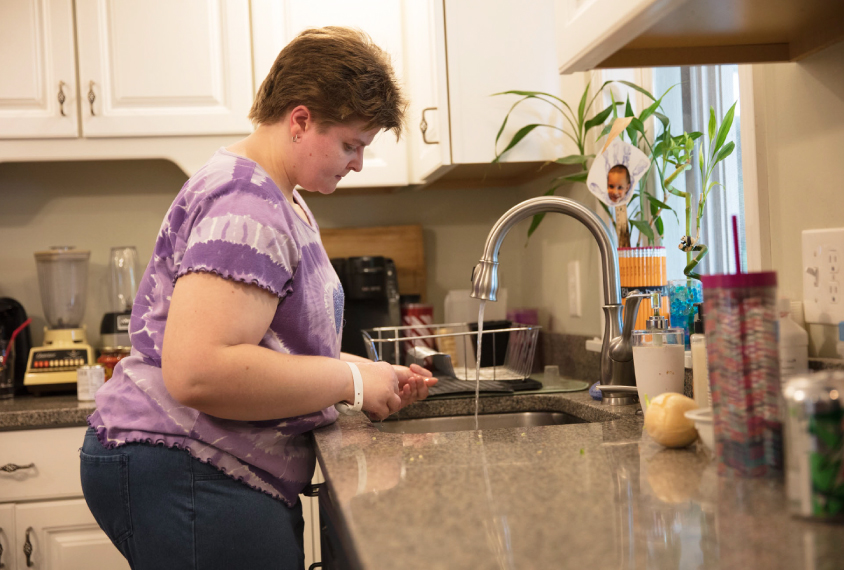
The question of placement is even trickier for autism, which comprises a constellation of features spanning multiple brain circuits. “We know [autism] is not in one place in the brain,” Adolphs says. “So if you ask [experts] where should you put an electrode, the answer would be about 100 different places all over the brain.”
The most plausible use for DBS in autism might be for problematic behaviors, such as severe self-injury. The surgeons make an educated guess about which functional module — motion, motivation, thought — might lie at the behavior’s root and target the circuit thought to be relevant. “It’s all based on some hypotheses and some understanding of what functions are involved,” Sheth says.
For someone like Becky, those hypotheses can be especially difficult to craft. Her challenges are so far-reaching that it took years to settle on a diagnosis. Becky was “very floppy” as a baby, Peirce says. She didn’t sit up on her own or hold toys when other babies did. She didn’t walk until 23 months. Speech came slowly, and she seemed off-kilter emotionally as well. Becky liked to be outside, but if she heard a loud noise — a motorcycle, airplane or siren — she would dash back into the house, flinging the front door out of her way. Eventually, her fear, like a fist, punched a knob-sized hole in the wall behind the door.
Muscle biopsies ruled out muscular dystrophy. A brain scan revealed unusually large amounts of white matter — the nerve fibers that connect brain areas — but no clear diagnosis. When Becky was 7, Peirce brought her to Bradley Hospital, a children’s psychiatric hospital in East Providence, Rhode Island, for a three-day evaluation. Doctors told her Becky has a form of autism known then as ‘pervasive developmental disorder-not otherwise specified.’ Peirce felt she had an answer but says, “I wasn’t 100 percent sold that was all Rebecca had.”
Becky made good progress in a special-needs classroom in a public school. At her peak, in her early teens, she acted like a typical 7-year-old and could read almost as well as most children that age. She could spell the months of the year, sign her name, write the date and what she’d done the day before — and use a computer. She could also bowl, swim and run competitively. A collection of Special Olympics medals hang from a mirror in her room.
But around age 17, Becky stopped collecting prizes. Without warning, she started spending much of her day consumed by mundane phenomena — the rush of running water, the whir of automatic doors, the hum of passing cars. She stood idly by the kitchen sink for 20 minutes at a time with the tap turned on, rubbing her fingers together until they bled. If her mother guided her away from the sink, she returned to it almost immediately. She stripped and took a bath four or five times a day; she flushed the toilet repeatedly. The water for the house comes from a well and, at times, Peirce worried they would run out.
At the bowling alley, the automatic doors at the entrance became the main attraction. Becky now needed a ball ramp, and gravity, to play, and her average score dropped from an impressive 120 to just 15. “Should I even take her?” Peirce wondered. But giving in to the obsessions seemed worse.
Becky stopped sleeping. Every night in January 2005, she wandered the house. She climbed into bed with her mother, got up, got back in bed — over and over. On 2 February, Becky, then 18, was admitted to Bradley Hospital. During her stay, Becky had a grand mal seizure — her first — and then another.
”“Individual cases as one-offs, as miracles, don’t push the field forward.” Helen Mayberg
We took a chance:
S
eizures are the specialty of neurologist John Gaitanis, who supervised Becky’s care. Becky’s seizures were quickly controlled, and she left the hospital on 17 February. But back home, most of the problems that had landed her at Bradley in the first place were as present as ever.Gaitanis had seen regressions like Becky’s before: newly aggressive behaviors and a worsening of ‘obsessions,’ which echo the repetitive behaviors and restricted interests that define autism. None of the various drugs often prescribed for obsessive-compulsive disorder (OCD) had worked for her. “In Rebecca’s case, the status quo was not acceptable because she was not functioning at all,” says Gaitanis, now chief of pediatric neurology at Tufts Medical Center in Boston.
In February 2009 the U.S. Food and Drug Administration (FDA) approved the use of DBS for OCD. The approval was based on results from a trial of 26 people with severe OCD, about two-thirds of whom experienced significant improvement. The results fell short of the FDA’s requirements for full approval, but were convincing enough for a ‘humanitarian device exemption.’
In the trial, surgeons had targeted the junction between the internal capsule — a tract of nerve fibers that connects the brainstem to the cerebral cortex — and the adjacent ventral striatum. The goal was to energize a circuit that governs response inhibition, thereby halting a useless cycle of activity. But none of the people in the trial have autism, and Gaitanis couldn’t be entirely sure Becky’s ‘obsessions’ reflect OCD. So “it was a very huge jump for us to say that using an anatomical target of OCD in neurotypical adults would somehow be the same in [Becky], that the response should be the same,” Gaitanis says.
He mentioned the approach to Peirce anyway, and together they weighed the pros and cons in her case.
DBS poses dangers, from stroke to problems with speech, vision, balance or other brain functions; the device can fail in a number of ways, and its batteries can die. On the other hand, the procedure is reversible, and doctors can adjust the current or move an electrode to minimize any side effects. It also requires just one night in the hospital. Peirce wanted to go for it. “Forgive this pun,” she says, “but it was a no-brainer for me to have [Becky] get this surgery.”
Gaitanis took a more nuanced view. “We opted to try it, recognizing that we have essentially no data,” he says. “We took a chance.” They planned for Becky to have the procedure in November 2009.
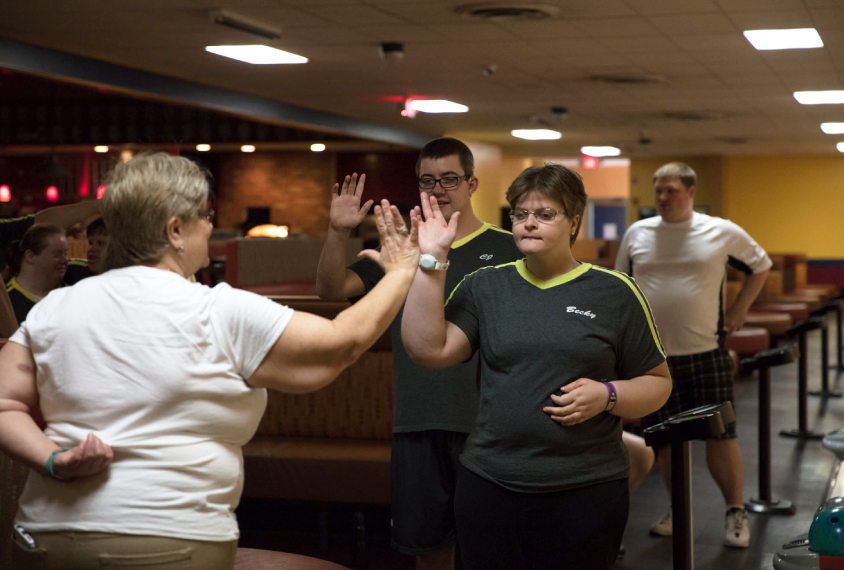
Unbeknownst to Gaitanis and Peirce, surgeons in Germany were contemplating something similar at the same time. A team led by Volker Sturm at the University of Cologne proposed performing DBS on a 13-year-old boy with severe autism and self-injurious behavior. The target in his surgery: the amygdala, the brain’s hub of emotional regulation.
The amygdala was not their only option. Some scientists consider self-injurious behavior to be an extreme expression of emotions such as excitement, boredom or anxiety. Others say the glitch is primarily motor. To split the difference, some teams have considered targeting the motor-motivation nexus in the basal ganglia, the ventral striatum or the globus pallidus, involved in motor regulation. Stimulating the globus pallidus has eased self-mutilation traits in individuals with Lesch-Nyhan syndrome, for example.
But any of various other brain regions might also have been good candidates — which is another way of saying that none of them are. “The rationale is really weak,” Helen Mayberg says of the German case. Mayberg, director of Mount Sinai Health System’s Center for Advanced Circuit Therapeutics in New York, is testing DBS to treat depression. Nonetheless, a review board gave the surgical team clearance for an ‘individueller heilversuch,’ or ‘individual attempt at healing.’ The boy’s parents signed off, and the boy had his surgery on 23 October that year.
Brain surgery:
The first step in prepping for DBS involves a brain scan. Surgeons use this picture to precisely map their target and to plan a safe path to it from an entry point on the head. Becky’s first scan, in August 2009, was a bust: She was not properly sedated and moved in the scanner, blurring the image and postponing the date of her surgery. The doctors were able to get a useable image after their second attempt, on 19 October. Four days later, on the same day as the surgery in Germany, they inserted four screws into her skull to anchor a ring-like ‘frame’ that would clamp her head to the operating table.
Becky walked around with those screws in her head for three months. On the morning of 29 January, her surgical team at Rhode Island Hospital in Providence, led by neurosurgeon Ming Cheng, attached the frame to Becky’s head and shuttled her to a scanner.
DBS is a fairly standardized procedure. Armed with brain navigation software, a surgical team chooses the entry point and maps the trajectory to the target they selected ahead of time. With the person asleep, they carve two dime-sized holes in the skull and thread hair-thin test electrodes to a spot about 15 millimeters above the target. Then, with the individual awake, they monitor brain activity to be sure the electrodes reached the right spot. The surgeon threads the larger DBS electrodes, the width of a strand of spaghetti, through the brain to that same location. After putting the person back to sleep, the team secures the electrodes under the scalp and closes the wounds.
In Becky’s case, the surgery went smoothly. By late afternoon the following day, she was home. On 4 February, Peirce’s birthday, Becky went bowling and earned a score of 66. The placement of the probes alone, without any stimulation, had had an effect. This improvement is common after DBS surgery, Sheth says, but temporary: Doctors have known for decades that creating a lesion in the brain can help with movement conditions, and inserting the probes creates tiny lesions.
A week later, Becky returned to the hospital for surgery to implant the battery-powered stimulators that deliver electrical pulses to her brain. Surgeons tucked each device into a pocket of space under her collarbone and then tunneled a wire from each one up the neck under the skin to connect them to the wires that thread through her brain.
Three weeks later, in Cheng’s office, a technician turned on Becky’s stimulator using a device resembling a television remote control that communicates with the stimulator in her chest. As Cheng adjusted the parameters, he watched for changes in her behavior: less hand-wringing or more communication, for instance. For some conditions, there are benchmarks for what has worked in the past. For Becky, it was true trial and error.
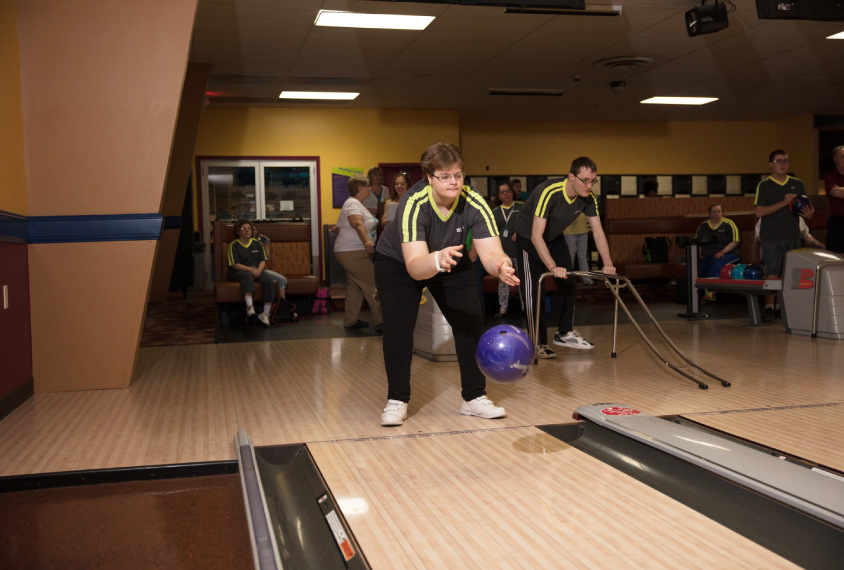
Yet two days later, Peirce posted on her Facebook page that Becky was “happy, talking and singing again!!” A week later, Becky won a gold medal at the Special Olympics winter games.
Over the following months, Becky spent much less time bathing, watching water at the sink and giving in to her other obsessions than she had before the surgery. But it was unclear what the stimulation was doing to her brain. The device’s current was set high and may have been igniting a confluence of neuronal pathways; that also meant Becky’s batteries were going fast.
By late September, Peirce noticed that Becky’s OCD-like behaviors, water use and eating were rising again. Peirce initially attributed the setback to Becky’s tooth pain. (Her teeth were decaying and she’d had several pulled.) But in early October, she brought Becky back to the hospital to get her batteries checked.
Cheng had left the hospital, so they saw his replacement, an eminent brain surgeon named G. Rees Cosgrove. Cosgrove was not surprised by Becky’s regression. “I wouldn’t have implanted her at all, because in fact she had such a broad number of diagnoses, it wasn’t clear what she had,” he says. He tested her electrodes and discovered that current wasn’t flowing through one of them. A subsequent X-ray revealed that a wire had broken in her neck and another had migrated away from its original target.
To fix it called for another surgery, and Cosgrove was resistant. Peirce, along with Becky’s care provider and teacher, told him that the surgery had made her better, but Cosgrove asked Gaitanis and Becky’s psychiatrist to write statements. An ethics board also weighed in and gave the procedure a green light.
Two weeks later, Cosgrove took out all the electrodes and scheduled to replace them in another two weeks. It was a long two weeks for Peirce: Becky was bathing and eating compulsively again, and her aggressive behavior had also returned.
The day after the surgery, on 4 December, Peirce called Cosgrove in a panic: Becky’s right cheek was grossly swollen and her eye was almost shut. He said the reaction was normal, but Peirce says that three days later he called her back with bad news: He was unhappy with the placement of the electrodes. (Cosgrove doesn’t recall this timeline.) Becky would need another surgery, scheduled for 13 January 2011. “They say third time’s a charm!” Peirce wrote on Facebook.
Cosgrove remained less than optimistic. “The cynical part of me said, ‘Well, I don’t believe this should have worked the first time, so I’m going to put them back in exactly the right place, the place that they worked [before], and let’s just see if we can reproduce this,” he recalls. “And we did.”
Again Peirce noticed a change even before the probes were switched on: Two weeks after the electrodes were replaced, Becky went to a Special Olympics bowling tournament. She got a strike on her very first practice ball and went on to achieve her best score in years. Peirce told Becky that she was “smoking,” which confused Becky. “I don’t smoke,” she told her mother.
Peirce was looking forward to seeing how Becky would do once the current was flowing again. On 2 February 2011, Becky and her mother navigated the icy roads to Rhode Island Hospital. This time, Cosgrove started her with a much lower voltage, but it still had a positive effect.
At the Special Olympics state championship that March, Becky had the stamina to bowl three games and then insisted on going to the event’s winter ball that night. Peirce had just bought Becky a new bowling ball as a reward for persevering through all the procedures. The ball was purple, of course, and sported a large stenciled image of Mickey Mouse.
As Becky’s behavior improved over weeks and months, it even swayed Cosgrove. “That sort of convinced me that, well, maybe this clinical improvement was real, and it is somehow related to the deep-brain stimulation,” he says.
The following March brought yet another compelling incident. Becky’s mother noticed that her OCD was surfacing again; she had developed severe sores on her hands from repetitive rubbing. When Peirce brought her to the hospital for a tune-up, it turned out her batteries had died. “Hello … more proof that the DBS system works!!” Peirce wrote later in a letter to the device company, Medtronic.
The company supplied Becky with long-lasting rechargeable batteries, which need to be replaced every 15 years instead of 2 or less.
Miniature models:
O
ne line of inquiry might provide more evidence for skeptics like Cosgrove.Six months before Becky’s second surgery in 2011, an electrophysiologist named Jianrong Tang arrived at Texas Children’s Hospital in Houston. Tang planned to study intellectual disability in mouse models of neurological conditions such as Rett syndrome. Children with this syndrome typically have an array of problems, including seizures, repetitive hand movements and autism. They also have significant problems with learning and memory, Tang’s area of expertise.
In collaboration with Huda Zoghbi at Baylor College of Medicine, Tang’s task was to fix these problems in a mouse model of Rett. If he could improve the mice’s memory, it might pave the way to a treatment. For inspiration, he looked to a safety trial of DBS in Alzheimer’s disease published in October 2010. The surgeons had targeted the fornix — a bundle of nerve fibers that carries information from the brain’s memory hub. The surgery slowed the rate of decline, on average, in the six individuals in the trial. Tang thought he’d try the same approach in the Rett mice.

The challenge was that he had to chronically stimulate a spot the size of a fine-point pen nib in a brain about the width of a person’s little finger. He turned to a stereotactical frame fitted with three robotic arms to move an electrode one-hundredth of a millimeter at a time. His team turned on the stimulation one hour per day for two weeks. Three weeks later, they put the mice through two memory tests and found, to their delight, that the Rett mice who got DBS improved on both.
The stimulation did not correct any other problems associated with Rett. Still, the team was ecstatic. “We celebrated with beers in the lab,” Tang says. Brain slices from the mice revealed that the stimulation had spurred the birth of new neurons. Since then, Zoghbi and her colleagues have delved deeper into how DBS might aid memory. They are also testing targets for easing other features of Rett syndrome, Zoghbi says.
Another team, led by Irving M. Reti at Johns Hopkins University in Baltimore, has tested DBS in two autism mouse models of self-injury: One strain lacks the MECP2 gene on the X chromosome, and the other has been stripped of both copies of SHANK3. Both strains self-groom excessively, gnawing on their paws and obsessively rubbing them together, and biting their tail all the way down its length.
Reti’s team implanted electrodes into the subthalamic nucleus of his mice. When the team turned on high-frequency current, the mice stopped their obsessive behaviors; the effect was immediate. The current did not affect the mice’s other movements or social behavior. When the researchers turned the current off, the obsessive behaviors returned, but only after several days.
To try to find out which neuronal pathway is responsible for the animals’ improvement, Reti’s team has since turned to optogenetics. In this technique, a virus delivers a light-sensitive protein to specific brain cells so that shining light in the brain selectively activates or suppresses these cells. The researchers pulse the light at various frequencies to mimic the electrical frequencies in DBS. They then see if the stimulation (or inhibition) eases the repetitive biting, indicating that they’ve found the right cells.
The investigation might point to more precise targets for DBS or nonsurgical methods in people with autism. Reti’s team has also treated autistic children and adults with self-injurious behavior using electroconvulsive therapy (ECT). Although they tend to respond well to that therapy, Reti says, “they are highly dependent on very frequent ECT long term.”
Researchers could also use DBS to track functional connectivity in the brains of people with autism, Adolphs says. He has used brain scans to trace the patterns of neural activity after stimulating electrodes implanted in 16 people with epilepsy: “That’s extremely valuable information,” he says. “If one did that in a case study with autism, you could shed a lot of light on connectivity in autism.”
Other researchers are investigating ways to stimulate brain regions without the need for surgery. For example, ‘transcranial’ magnetic stimulation involves creating a magnetic field close to the head to alter neuronal activity near the brain’s surface. Preliminary evidence suggests that the stimulation eases compulsive behaviors in people. The FDA last month approved marketing of the technique for OCD.
However, the technique cannot reach structures deep in the brain without affecting overlying regions. Last year, researchers led by Edward Boyden at the Massachusetts Institute of Technology debuted a noninvasive form of DBS in which four electrodes attached to the scalp create two electrical fields in the brain. Where the fields overlap, neurons fire. By adjusting the current flowing through the electrodes, Boyden’s team can steer the fields to stimulate a specific site in the brain. This sort of method could dramatically lower the bar for attempting to treat problem behaviors in autistic people using brain stimulation.
“The goal is to get the technology into the hands of many different clinicians for the purpose of experimentation,” Boyden says. “If doctors with their clinical knowledge find that indeed stimulating a certain region in a certain pattern can help people, then that could be a noninvasive therapy.”
”“I think there will continue to be cases where [DBS] is clinically warranted and from a purely scientific research perspective, in principle, very valuable.” Ralph Adolphs
‘Papa,’ ‘Mama’ and ‘hunger’:
F
or the autistic teenager in Cologne, Germany, DBS proved extremely beneficial. Not only did his self-injurious behaviors subside, he started making more eye contact, showed less social anxiety and began sleeping through the night. His doctors sharply decreased or stopped some of his medications for anxiety, irritability and sleeplessness. Six months after the current began flowing to his brain, he uttered, for the first time, a few words — ‘Papa,’ ‘Mama’ and ‘hunger’ — in the proper context.In January 2012, more than two years after his surgery, the boy showed a significant drop in irritability and less severe self-injury; he often no longer needed restraints. His improvement led some experts to call for clinical trials of DBS for autism.
Another surgical team has also seen limited success using DBS in individuals with severe autism. In 2012, Amber Stocco, then a neurologist at Texas Children’s Hospital in Houston, saw a 19-year-old autistic woman suffering from involuntary and debilitating movements: Her neck jerked backward and her tongue twitched abnormally, making her speech unintelligible. She couldn’t swallow and had dropped more than 50 pounds by the time Stocco saw her.
This so-called ‘tardive dyskinesia’ is a rare side effect of risperidone, a medication approved for irritability and aggression in autism. The woman had long since gone off the drug, but the movements had taken on a life of their own. Her mother wanted to try DBS before resorting to a feeding tube.
When a surgeon inserted electrodes in the young woman’s globus pallidus, her abnormal movements diminished. She could swallow again, and her ability to speak improved. She also stopped flapping her hands, which she had done since infancy, and even made attempts to read. “[Her] mom was thrilled with that side of things in addition to the fact that she could eat,” says Stocco, now a neurologist at Integris Children’s Hospital in Oklahoma City.
Last year, surgeons in South Korea reported treating a 14-year-old autistic boy who had repeatedly fractured his face with his fist. They placed electrodes in the boy’s nucleus accumbens, which modulates reward processing and pleasure. (The processing of social and other rewards may be altered in autism.) After the surgery, the boy’s psychiatrist noticed his facial deformities and bruises had healed somewhat, and the boy no longer had to wear headgear to protect his face. The boy’s language skills and eye contact improved, as did his scores on various tests of social responsiveness, irritability and hyperactivity.
As promising as they seem, these individual success stories do not offer the type of evidence that would convince skeptics to add DBS to their armamentarium for autism. “Individual cases as one-offs, as miracles, don’t push the field forward,” Mayberg says. Instead, scientists would need to conduct a trial in which they recruit people according to strict criteria and have a clear rationale for intervening in that specific group, predefined outcome measures and an understanding of the circuits at play.
Mayberg says she gets many calls from desperate people who don’t meet the criteria for her current investigations of DBS for depression. “Of course I would like to help them. [But] I don’t know that what I do is applicable, and I don’t have permission to do that — and that would be reckless,” she says. “Just because you’re a surgeon and can go into someone’s head, doesn’t mean you do.”
Growth spurt:
T
here are also enough cautionary tales to put people like Mayberg off.Stocco used DBS to treat extreme self-harm in one 17-year-old autistic boy at the behest of his family, after she explained that it was not standard care. The young man rocked incessantly, bit his caregivers, punched his legs and arms and pounded his feet on the floor until his toenails came off. The surgeon placed the electrodes in the boy’s globus pallidus, as well as his internal capsule. When the team turned the stimulators on, his abnormal movements disappeared. “[His] mom was over the moon,” Stocco says. Within six months, though — and for unknown reasons — his movements all returned.
Part of the problem may be that nobody really knows where to intervene for autism traits; and given the condition’s heterogeneity, the best location may well differ from one autistic person to the next. “My take for autism — you are in a growth spurt in recognizing phenotypes; you won’t want to mess around yet,” Mayberg says.
As more people with autism receive genetic diagnoses, however, this growth spurt may approach its asymptote and, ultimately, clear a path for the use of DBS in some instances.
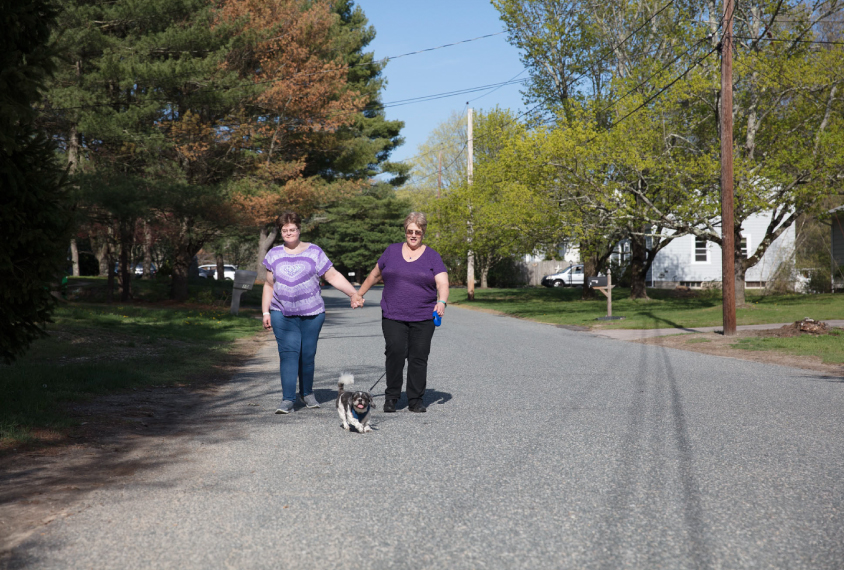
A genetic test finally gave Becky a concrete diagnosis, if not any clues to why DBS has helped her. In 2013, Peirce learned that Becky is missing a stretch of DNA on one copy of chromosome 9. The deletion removed 14 genes, including EHMT1. That gene is associated with a rare condition called Kleefstra syndrome, characterized by intellectual disability, weak muscle tone and, often, autism. Most people receive this diagnosis early in life, but Becky was 26 — and already five years past the DBS surgeries that saved her from her severe regression.
Becky continues to do well at home — and at the bowling alley. On a warm Saturday in April 2017, Becky and her mother arrive at North Bowl Lanes in North Attleborough, Massachusetts. A dozen or so other young adults with disabilities from Becky’s bowling group walk from the sunny parking lot into the dark interior. All of them are accompanied by a parent, most by smiles. They don identical shirts with yellow-striped sleeves that show their first names in front.
Becky bowls in the morning because she has more energy then; in the late afternoon, even a walk down the block drains her. The electricity flooding her brain has all but erased her OCD, but she tires readily and the future is uncertain. “I know it’s still working,” Peirce says, “[but] she’s 31 and I think she’s aging, so I don’t know if the effect of it is all going to stay and hold its ground — so I guess that worries me some for the future.”
Today, though, Becky is alert and full of energy. She knows the rules, scores and the timing of turns. When she’s up, she finds her Mickey Mouse ball in the ball rack, carries it to the foul line and shoves it forward. It lands in the lane with a clunk, rolls apace and knocks down pins. On one subsequent turn, she gets a strike. She turns around, grinning, and asks no one in particular, “Did I do a good job?”
Syndication
This article was republished in Science.
Recommended reading

Developmental delay patterns differ with diagnosis; and more

Split gene therapy delivers promise in mice modeling Dravet syndrome

Changes in autism scores across childhood differ between girls and boys
Explore more from The Transmitter

‘Natural Neuroscience: Toward a Systems Neuroscience of Natural Behaviors,’ an excerpt

